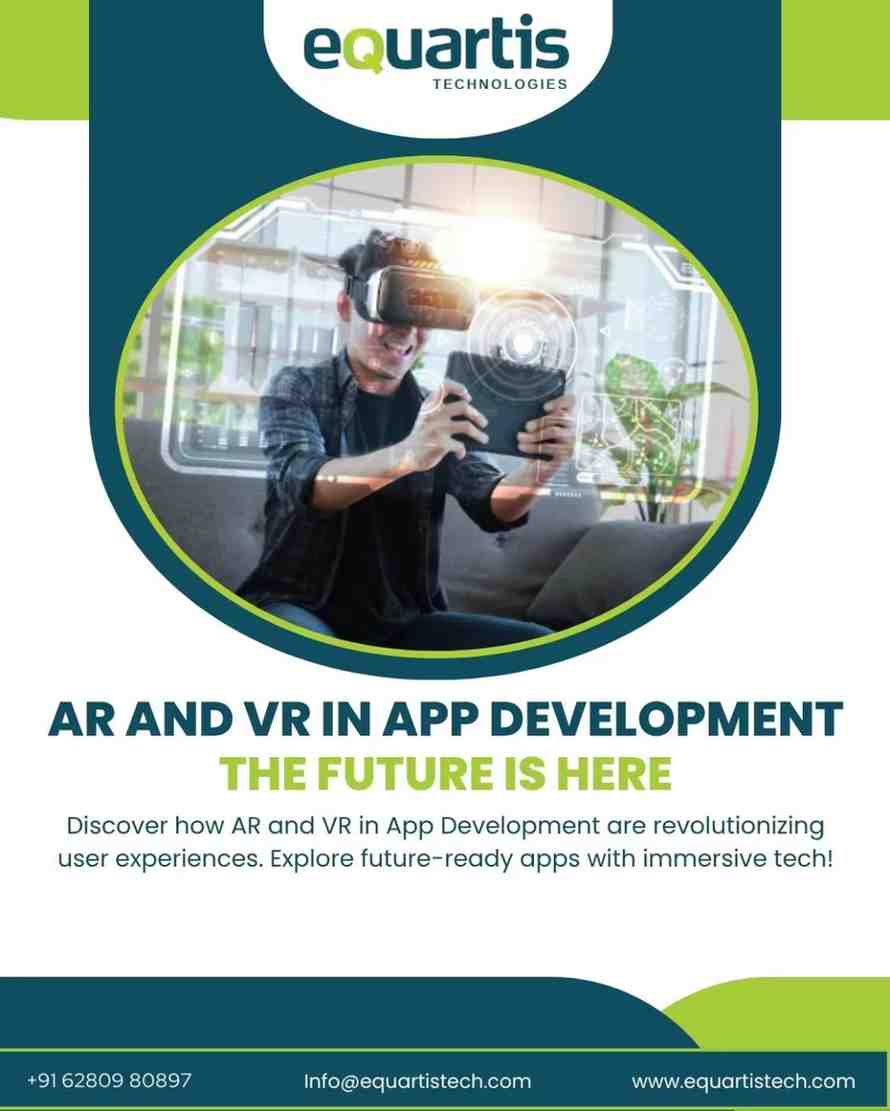


Discover how AR and VR in App Development are revolutionizing user experiences. Explore future-ready apps with immersive tech!
The digital landscape is evolving at a rapid pace, and AR and VR in App Development are at the forefront of this transformation. From retail to healthcare, these immersive technologies are pushing boundaries, creating experiences that were once limited to science fiction. Today’s businesses no longer just build apps—they build realities.
With AR and VR, apps are more than just tools. They’re gateways to new worlds. Whether it’s guiding customers through virtual showrooms or enabling surgeons with real-time overlays, the possibilities are staggering.
Let’s unpack how augmented and virtual reality are becoming essentials in app development—and what this means for your business.
Understanding the Tech: What Are AR and VR?
Before diving into their application in development, let’s simplify the definitions:
AR (Augmented Reality): Adds virtual elements to the real world through smartphone screens or AR glasses.
VR (Virtual Reality): Creates an entirely simulated environment, typically accessed through headsets.
Together, virtual reality and augmented reality—better known as ar and vr—are transforming digital touchpoints.
The Impact of AR and VR in App Development Across Industries
Retail & E-commerce
Ever tried virtual try-ons in shopping apps? That’s AR doing its magic. Brands use AR to show how a product would look in real life—from glasses to furniture. VR lets users “walk” through virtual stores before making decisions.
Healthcare
AR assists surgeons with real-time 3D overlays during operations. VR is used in rehabilitation and mental health therapies, helping patients confront phobias or practice motor functions.
Education
Imagine students exploring ancient Rome in VR or interacting with molecules via AR. It’s revolutionizing the way concepts are taught and retained.
Real Estate & Architecture
Virtual tours of unfinished properties and AR-enhanced design planning now allow faster and more accurate decision-making.
Entertainment & Gaming
Gaming apps are practically built on ar vr technology. From Pokémon GO to Meta’s virtual environments, immersive entertainment has become the norm.
Why Businesses Need to Adapt: Commercial Value of AR/VR
Companies that embrace AR and VR in App Development gain a competitive edge. Here’s how:
Brand Differentiation: Interactive elements create memorable user experiences.
Customer Retention: Engaging apps mean repeat users.
Enhanced Product Visualization: Boost conversion rates.
Training Simulations: For industries like aviation and manufacturing, VR-based training is safe and effective.
Want to lead the market? The time to embrace virtual augmented reality is now.
Technical Framework for AR/VR App Development
Building immersive apps is exciting, but complex. Developers need to consider:
Hardware compatibility: From smartphones to VR headsets.
3D modeling & graphics: High-quality visuals matter.
User Interface (UI): AR/VR calls for intuitive interaction.
Real-time data processing: For fast rendering and response.
Most businesses choose a specialized VR development company to ensure smooth performance, scalability, and tech support.
App Ideas That Shine with AR/VR
Let’s brainstorm a few innovative app concepts:
Sector AR/VR App Idea
Travel Virtual destination previews
Fitness AR-guided workouts or VR cycling apps
Home Décor AR-based furniture placement
Fashion Virtual wardrobe and styling assistants
Education VR field trips, AR lab simulations
Marketing AR and VR Apps: Tips for Visibility
You’ve built an amazing AR/VR app—now, how do you market it?
Use immersive demos in ads: Let users experience it first-hand.
SEO Optimization: Include keywords like AR VR technology, and virtual augmented reality.
App Store Descriptions: Highlight immersive benefits clearly.
Social Media Showcases: Behind-the-scenes development, user reactions, etc.
Tools & Platforms for Development
Some popular choices among developers:
Tool/Platform Purpose
Unity + Vuforia AR development
Unreal Engine VR gaming & simulation
ARKit/ARCore iOS/Android AR apps
WebXR Browser-based VR/AR
Choosing the right stack depends on your app goals, audience, and supported devices.
Challenges & How to Overcome Them
User Adaptability: Some users are hesitant—offer tutorials.
Cost of Development: Start with MVP; scale as needed.
Device Limitations: Ensure cross-platform functionality.
Data Privacy: AR/VR collects detailed behavioral data—secure it.
Partnering with an experienced vr development company can minimize these risks.
The Future Ahead: What’s Next in AR and VR?
Mixed Reality: Blending AR and VR seamlessly.
5G Integration: Real-time immersive interactions.
AI-powered personalization: Tailored virtual environments.
Remote Workspaces in VR: Changing how companies operate.
The potential is exponential—and businesses should be ready to evolve.
Conclusion
AR and VR in App Development aren’t trends—they’re the new standard. From enhancing user experiences to transforming business models, immersive tech is now central to digital innovation. Brands that embrace it will shape the future—those that don’t may lag.
